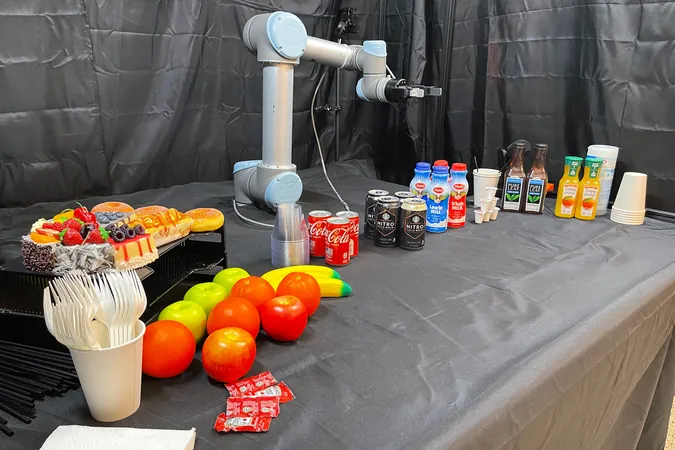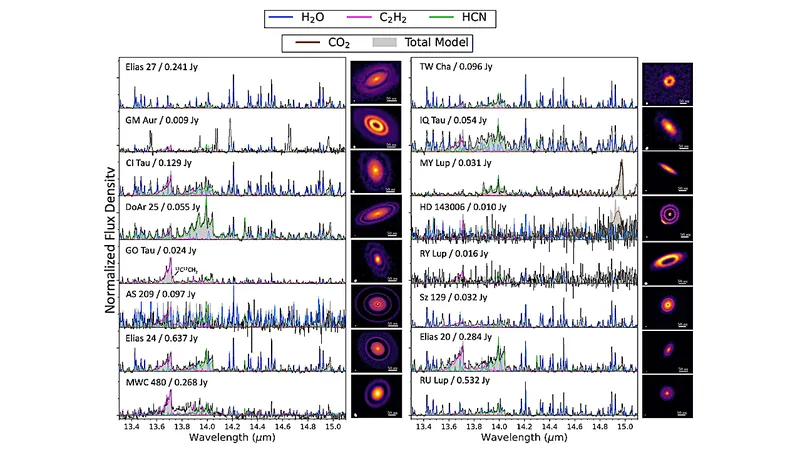
Revolutionary Robot System Adapts to Assist Humans Like Never Before!
2025-04-24
Author: Mei
Step Aside, Humans! A New Robot Revolutionizes Assistance
Navigating the real world is no simple task for robots, faced with an overwhelming amount of data to process. Yet, MIT’s cutting-edge roboticists have found a way to slice through the chaos, honing in on what truly matters to offer unprecedented assistance to humans.
Introducing 'Relevance': The Game-Changing Approach
Dubbed 'Relevance,' this innovative strategy allows robots to interpret both visual and audio cues in their surroundings. In this way, they can quickly determine a human's goals and identify the most necessary objects, streamlining their assistance process.
Buffet Brilliance: A Real-World Test
In a fascinating experiment mimicking a conference breakfast buffet, a robotic arm—equipped with a microphone and camera—demonstrated this ingenuity. The robot accurately identified and provided assistance based on human cues, achieving a staggering 90% accuracy in predicting objectives and 96% in pinpointing relevant objects.
The Robot: Your New Breakfast Buddy
In the trials, when a human reached for a can of coffee, the robot quickly responded with milk and a stir stick. In another instance, it sensed a conversation about coffee between two attendees and proactively offered them drinks. Thanks to the 'Relevance' method, the robot also reduced collision rates by over 60%, ensuring a safer interaction.
Inspired by the Human Brain's Filtering Power
The brilliance of the 'Relevance' system is reminiscent of human cognitive function. Just as we rely on the Reticular Activating System (RAS) in our brains to filter distractions, this robotic system is designed to focus on pertinent details. The team has crafted a system that mirrors this capability to help robots selectively process information.
How It Works: The Four Phases of Enhanced Interaction
The approach operates in four key phases: 1) Continuous observation through audio and visual input refined by AI; 2) Periodic 'trigger checks' for significant events, like the appearance of a human; 3) Real-time relevance assessment based on gathered data; and 4) A thoughtfully planned approach to physically offer the most relevant items.
Unleashing Potential in Workplaces and Homes
Eager to expand its application, the MIT team envisions robots aiding in smart manufacturing and warehouses, as well as within households. The potential is thrilling—imagine a robot bringing you coffee while you read, or fetching laundry supplies during chores!
Preparing for a New Era of Human-Robot Collaboration
Set to unveil their findings at the upcoming IEEE International Conference on Robotics and Automation (ICRA), the researchers are paving the way for a future where human-robot interactions are more seamless, natural, and intuitive than ever before.
This groundbreaking work, supported by the King Abdulaziz City for Science and Technology, marks a significant leap toward a world where robots are not just tools but active participants in our daily lives.


 Brasil (PT)
Brasil (PT)
 Canada (EN)
Canada (EN)
 Chile (ES)
Chile (ES)
 Česko (CS)
Česko (CS)
 대한민국 (KO)
대한민국 (KO)
 España (ES)
España (ES)
 France (FR)
France (FR)
 Hong Kong (EN)
Hong Kong (EN)
 Italia (IT)
Italia (IT)
 日本 (JA)
日本 (JA)
 Magyarország (HU)
Magyarország (HU)
 Norge (NO)
Norge (NO)
 Polska (PL)
Polska (PL)
 Schweiz (DE)
Schweiz (DE)
 Singapore (EN)
Singapore (EN)
 Sverige (SV)
Sverige (SV)
 Suomi (FI)
Suomi (FI)
 Türkiye (TR)
Türkiye (TR)
 الإمارات العربية المتحدة (AR)
الإمارات العربية المتحدة (AR)